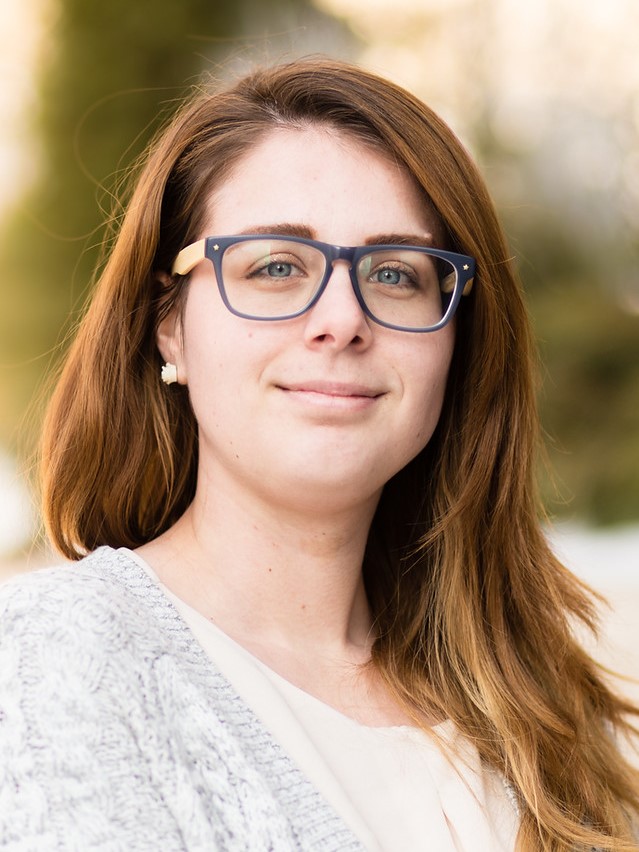Alumni Spotlight: Kaitlin Carroll

Kaitlin is passionate about fighting climate change and reducing our carbon footprint. Armed with a Master's degree in Building Science from Toronto Metropolitan University, she is helping to build carbon neutral neighborhoods and low impact green buildings to advance that fight. Chosen as one of the Top 30 Under 30 in Sustainability (external link, opens in new window) by Corporate Knights (external link) for her work to build low carbon communities, she is re-defining sustainability within the building science industry as the norm and not the exception.
As The Atmospheric Fund (TAF)’s Energy & IEQ Research Coordinator, she works with the TowerWise program team to examine indoor air quality and energy use within the built environment. Also, as co-chair of the Emerging Green Professionals (EGP) Committee at the Canada Green Building Council (external link, opens in new window) – Greater Toronto Chapter, Kaitlin wants to ensure the voices of new and upcoming young building science professionals committed to environmental sustainability are supported and empowered to find innovating solutions to this urgent issue at hand. We connected with her to find out more:
1. You studied environmental studies and then building science at Toronto Met. Why did you pick Toronto Met?
While my Bachelor in Environmental Studies laid a good foundation, I felt like I needed a more focused program in order to gain a solid understanding of the topic I was passionate about – sustainable buildings. Toronto Met’s Building Science program stands out in Canada (and even North America) as one of the only programs specific to building science rather than a more general engineering degree. Also, when it comes to innovation and sustainability, Toronto Met is really pushing the envelope, so the overall direction of the university aligned well with my goals.
2. Tell us about your degree and how it prepared you for your professional life?
My master's really had two strengths. First, it was focused enough to provide me with a deep understanding of building science theory. It was also very practical, despite the common notion that master’s degrees will be very theoretical. I learned a lot of skills that I use in my job at The Atmospheric Fund (TAF) every day. I definitely felt more prepared for the professional realm after completing my degree.
3. How is building science evolving and what are some of the emerging trends?
It’s an exciting time for building science! In particular, I’m seeing more interdisciplinary work between building scientists and other fields. Public health is one example of this, where engineers, architects, and many other stakeholders in the building industry are actively working with health practitioners to link health outcomes with the built environment. For me, I’m keeping an eye on a number of programs linking energy efficiency retrofits and health outcomes in the U.S. and Canada! Connections like this will be very important for building scientists in the future.
4. What are some of the potential benefits of investing in green building technologies?
In TransformTO, the City of Toronto’s climate action plan, we have clear guiding principles regarding social equity and poverty reduction – which are crucial to an intersectional approach to the transition for a low-carbon future. Green building technologies have an opportunity to go beyond energy and emissions reductions and achieve multiple benefits such as improving indoor comfort, addressing overdue capital repairs, and extending the building lifespan – benefits that are especially relevant for Toronto’s aging building stock such as in community housing. In my work at TAF, we focus a lot on co-benefits from energy efficiency retrofits. These include things like improved thermal comfort and indoor air quality as a result of investing in more efficient systems. There’s also the opportunity to provide savings to residents and building owners, such as introducing low-carbon building technologies (e.g. heat pumps).
5. What key green building technologies are you watching?
In our local context, the most critical green building technologies are those that will help us reduce the carbon emissions associated with heating and cooling our spaces. We need mechanisms that will move us away from reliance on natural gas as a heating source, and look for more efficient ways to take advantage of the relatively clean energy grid. This transition, rather than any specific technologies, is what to watch for in the next few years.
6. What advice would you give to students thinking of going into the building science program?
It’s challenging – especially for someone like myself, who didn’t start off with a very technical background, but it’s very rewarding. Take advantage of the numerous opportunities to build extra-curricular experience, such as listening to expert speakers (or finding opportunities to present yourself), workshops, and the collaborative project.